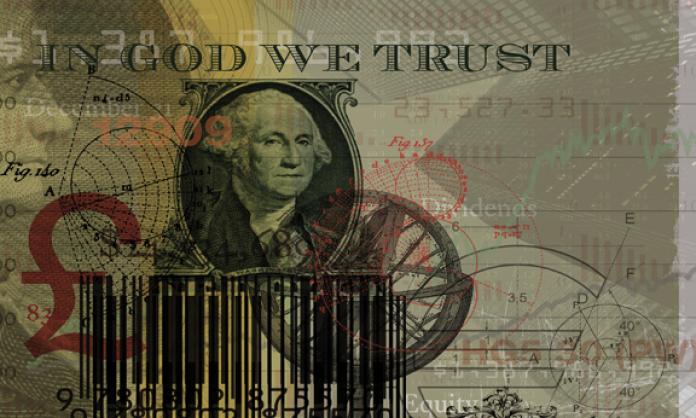The global financial crash of 2008 and the period since have created puzzle after puzzle for the mainstream economics that dominates the thinking of central banks and government departments, and the syllabus of university courses. Yet there has been no re-evaluation of the underlying assumptions on which economics is based. It is the great secular theology of our age: a mystical apologetics for capitalism, which says that a market economy is the most efficient way of allocating resources across society.
The theoretical core of modern economics was established in the 1870s and 1880s. It outlined a system tending toward equilibrium, matching demand and supply, creating full employment, delivering efficiency and mutual advantage from market exchange and trade. Mainstream economics acknowledges many observed ills of capitalism, but says that these are not due to the system per se, but to imperfections that stop it working as it should.
Across the spectrum of mainstream economics – from right wing laissez-faire advocates to comparatively left wing advocates of state intervention to stimulate and regulate the economy – there is a belief that market failures or imperfections can be fixed by the whizzes at the central banks and treasuries.
There is also a broad consensus about addressing other market ills, such as the manic exuberance or panic of financial investors. The mainstream view is that we can regulate and mitigate economic bubbles, but cannot eliminate them. Just as Christian theologians explained the existence of evil in a world made by God by blaming the free will of fallen humans, mainstream economists don’t blame the godly processes of capitalism, but the choices of irrational agents.
For example, Alan Greenspan, long time chair of the Federal Reserve, the United States’ central bank, said in 2002 that mortgage fund derivatives had made the financial system more stable by diversifying risk. As it turned out, derivatives were the devices through which the crisis was spread. In 2008, he confessed his shock and disbelief to Congress. He had been blindsided in his understanding of the economy.
Prominent voices in the mainstream have acknowledged that the financial system is inherently prone to instabilities. But in their search for an explanation of these instabilities they have remained within the boundaries of the mainstream lexicon. Their focus is not on the nature of credit markets, but on the psychology of investors – their greed and irrationality, their tendency to follow as a herd and overinvest in bubbles, then get spooked and pop the bubbles.
Lawrence Summers, secretary of the US Treasury in the 1990s, has pushed such views in recent years. He connects this to the field of “behavioural economics”, which points out all the ways observed human behaviour diverges from the model behaviour of economically rational agents. But he leaves intact the underlying theological defence of capitalism, understood through an idealised vision of rational agents and perfect competition.
It’s not just on the role of individuals that mainstream economists have faltered, but on the relationship between the state and the market. A decade ago, the apostles of small government and minimal intervention in the market carried out the biggest bouts of public borrowing and state spending in history to bail out the banks and stimulate the economy. The recession ended in important parts of the world in 2010-11, but growth since then has been slow.
Keynesians such as Paul Krugman, Nobel Prize winner and columnist for the New York Times, have attributed the persistently slow growth to austerity policies. He offers instead deficit-funded public investment to stimulate the economy and create jobs. Another Keynesian, Oxford economist Baron Skidelsky, believes the problem is the financial sector’s control over investment. Banks prefer to hold onto their money instead of investing it in enterprises at inconvenient moments. Better to have a portion of social investment controlled by the state to invest when the private sector won’t. That would revive the private sector’s confidence and induce it to invest.
But state investment to restore private sector “confidence” is not enough to return the world economy to brisk and self-sustaining growth. For that, profitability must be restored.
Because of competitive pressures, overcapacity has built up in many industries globally – a glut of factories and industrial hubs. The cause of the persistent slow growth is not too few products or too little buying power in the hands of workers (which Keynesian stimulus might address), but too much productive capacity relative to what can profitably be produced and sold.
This glut has two effects. One, existing enterprises will not make the profit they had anticipated. Many will go bankrupt because they are running on loans they expected to repay out of their profits. Two, no matter how much confidence is restored, capitalists will not invest if there is already overproduction.
The easy credit doled out by states and banks has either been hoarded as idle money or has fed new bubbles in real estate and the share market. This happens periodically in capitalism. But because mainstream economics expects demand to match supply, prolonged and system-wide overcapacity is not even on their theoretical radar.
In contrast to mainstream theories, Marxists argue that periodic depressions and bubbles are produced by profit-seeking competition itself – by the very motor of capitalism – and can be overcome only by abolishing the system and replacing it with a different one. It is understandable then, why the economic theologians insist that wherever the fault lies, it cannot lie with the core of the capitalist system.










